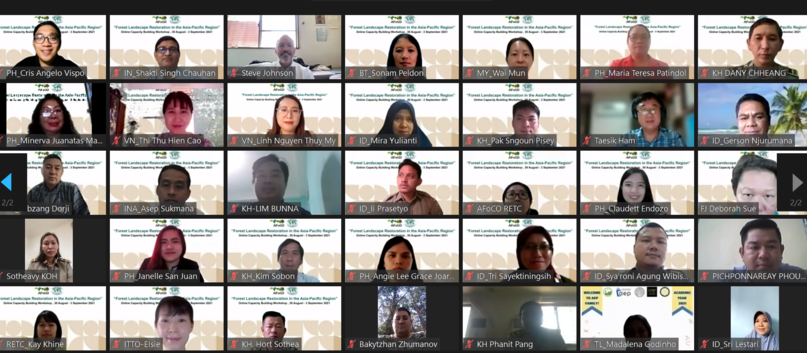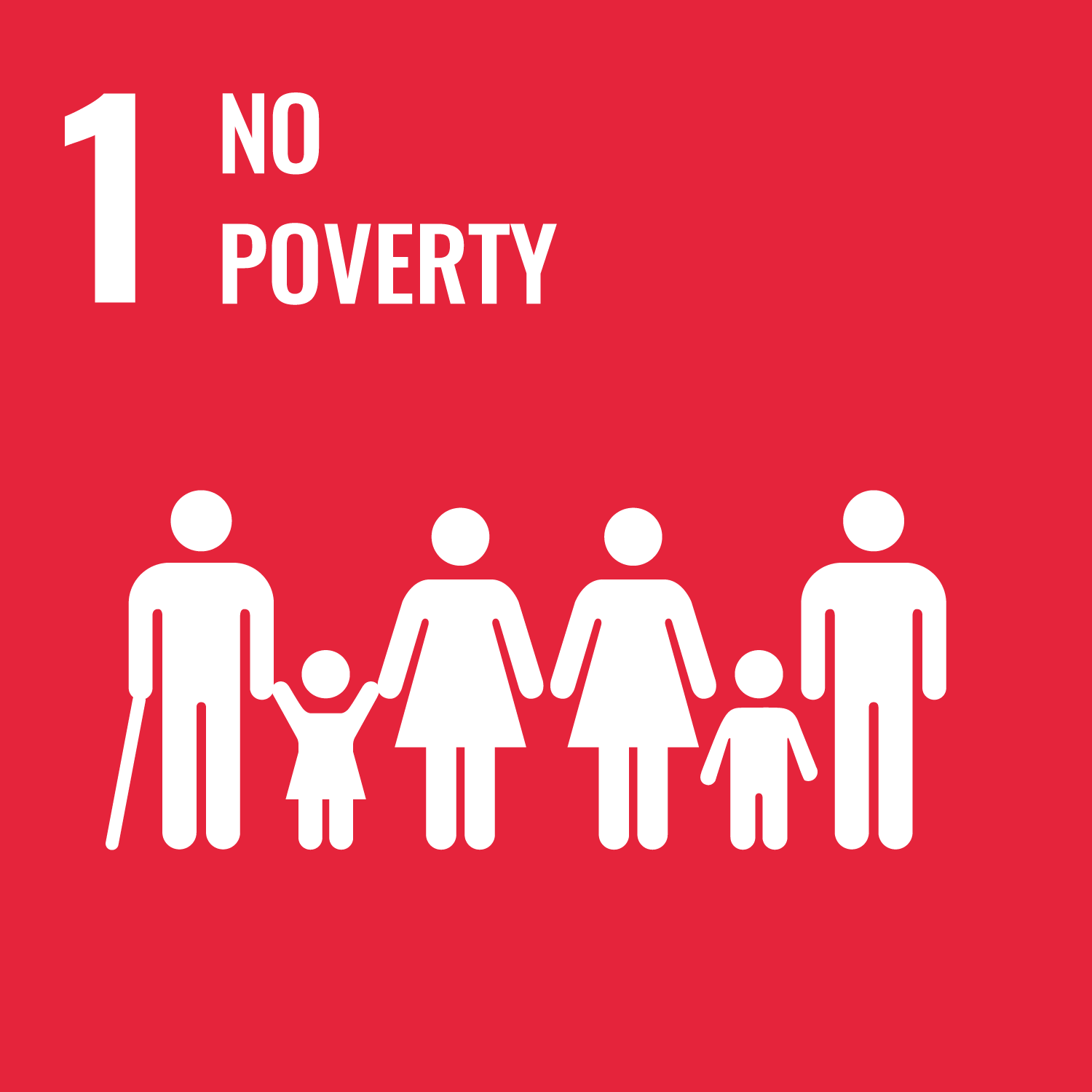Workshop explores key elements of successful forest landscape restoration in Asia-Pacific
29 September 2021

The AFoCO–ITTO Online Workshop on Forest Landscape Restoration in the Asia-Pacific Region was held in August/September 2021.
Yokohama, 29 September 2021: Creating sustainable livelihood opportunities and obtaining the buy-in of local people through inclusive approaches are key for successful forest landscape restoration, according to participants at a virtual workshop for the Asia-Pacific region co-convened by ITTO and the Asian Forest Cooperation Organization (AFoCO).
The AFoCO–ITTO Online Workshop on Forest Landscape Restoration in the Asia-Pacific Region took place from 30 August to 3 September 2021, with the participation of more than 70 restoration practitioners and other experts. It was the second in a series of training events worldwide on forest landscape restoration (FLR) designed to increase awareness and understanding of ITTO’s Guidelines for Forest Landscape Restoration in the Tropics, published in 2020. The first workshop, for Central America and Mexico, was held in August 2021.
Participants in the Asia-Pacific workshop recognized that creating sustainable livelihood opportunities for local communities and smallholders is crucial for the long-term sustainability of FLR projects. Therefore, it is important to analyze the value chains of products and services produced in restored forest landscapes to ensure their economic viability. Livelihood diversification can be accelerated by integrating FLR activities into agroforestry, production forests and the protection of natural forests.
Speaking at the opening of the workshop, ITTO Officer-in-Charge Steven Johnson said there was an urgent need to scale up successful FLR interventions in the context of restoration targets and initiatives, and one of the keys to this was ensuring that local people obtained sufficient benefits from initiatives and were intimately involved in planning and implementation.
“Promoting inclusive and integrated FLR interventions is essential to reverse land degradation, increase carbon storage, help conserve biodiversity and create sustainable livelihoods for local communities,” said Dr Johnson.
Keynote speakers supported this view in their presentations to the workshop.
Jürgen Blaser at the Bern University of Applied Sciences, Switzerland, said the aim of the guidelines, of which he is a co-author, is, “to help stakeholders—from policymakers to foresters, community-based organizations and farmers—in restoring degraded forest landscapes, thereby providing vital goods and services, creating sustainable rural livelihoods and employment, and supplying locally and globally important forest ecosystem benefits”.
According to IUFRO’s Michael Kleine, the “FLR process as a best practice can contribute to the development of a bio-based circular economy. Understanding and accommodating the plurality of local aspirations is key to achieving global restoration goals.”
The Green Climate Fund (GCF)’s Jerry Velasquez addressed the role of FLR in addressing climate change. “Forest landscapes are fundamental to low emissions and the climate-resilient development pathways of developing countries,” he said. “For sustainable and resilient forest landscapes, leveraged and private and public sector financing and increased REDD+ results-based payments are essential.”
Workshop participants also learned about IUCN’s Restoration Opportunities Assessment Methodology (ROAM); social environment safeguards for FLR and the application of free, prior and informed consent in REDD+ in Viet Nam; the analysis of carbon benefits for FLR interventions; and FLR project formulation methods, including stakeholder and problem analysis.
Other points to emerge over the course of the five-day workshop included the following:
- FLR is much broader than forest plantations, which constitute the main forestry-related approach in many countries. FLR focuses on restoring landscapes and considers the full range of interacting land uses, tenure and governance arrangements. The aim is to restore multiple socioeconomic and environmental functions in landscapes and to generate a wide range of ecosystem goods and services that benefit all stakeholders equitably. FLR must not cause the loss or conversion of natural forests or other natural habitats. It involves adaptive approaches to creating resilient landscapes in the face of climate change.
- Obtaining the buy-in of local people through inclusive approaches to improve their livelihoods is key for successful forest landscape restoration. FLR benefits need to address common interests to improve the flow of forest goods and ecosystem services at different scales by a wide range of stakeholders. Ensuring an early flow of benefits to local communities and smallholders through positive livelihood outcomes is essential for long-term environmental and social sustainability.
- There is a need to increase interaction between FLR practitioners and national designated authorities and focal points under the various international mechanisms, such as the UN Framework Convention on Climate Change, the UN Convention to Combat Desertification, the Convention on Biological Diversity and UN-REDD, to improve understanding of financing sources and procedures, which change over time. This should be addressed immediately by institutionalizing regular interactions between actors as a matter of government policy.
- To increase the chances of success in obtaining co-financing for FLR projects, it is important to approach appropriate financing sources that will reduce perceptions of risk for funding agencies. Potential funding sources were identified for activities that:
- store carbon and increase resilience—multilateral organizations like the GCF and the Adaptation Fund
- are part of a government mandate—public domestic finance
- are transformative—bilateral organizations and multilateral organizations like the GCF
- generate income—private finance
- need short-term finance—public international finance
- need long-term financing—payments for ecosystem services, carbon markets and private finance.
- To increase the chances of success, FLR implementing agencies should prepare high-quality FLR project proposals. To this end, they should consider making use of the funding window of the GCF’s Project Preparation Facility, which offers grants of USD 1 million per country per year for the development of proposals.
- It is possible to identify the extent and depth of degradation over vast areas of forests in the tropics using Google Earth Engine, an open-source platform capable of assessing land-cover changes at scale requiring minimal skills, and the source data are free of charge.
Download the Guidelines for Forest Landscape Restoration in the Tropics and policy brief
Download the workshop keynotes and presentations
Access the video recordings of the keynote presentations and other materials



